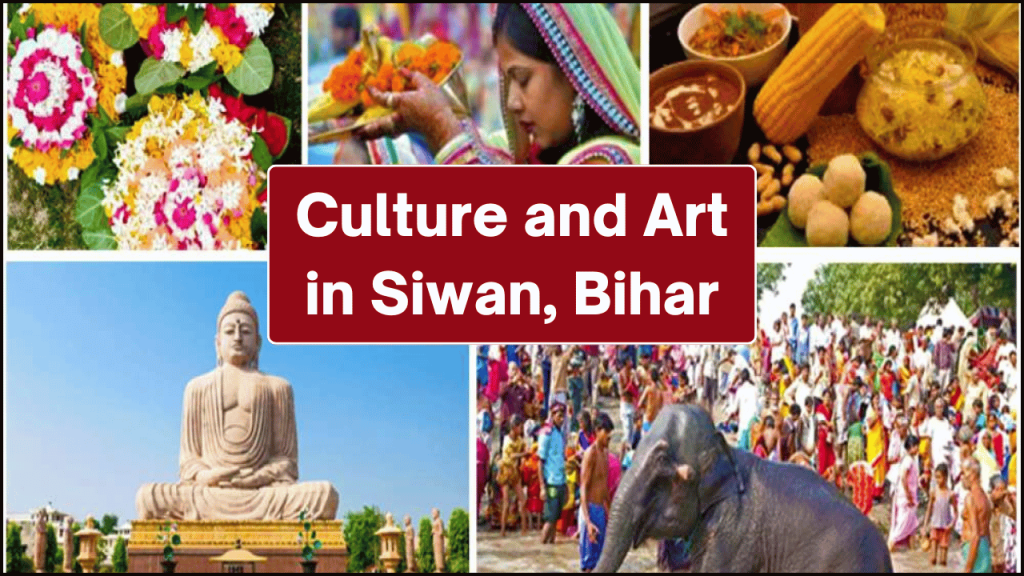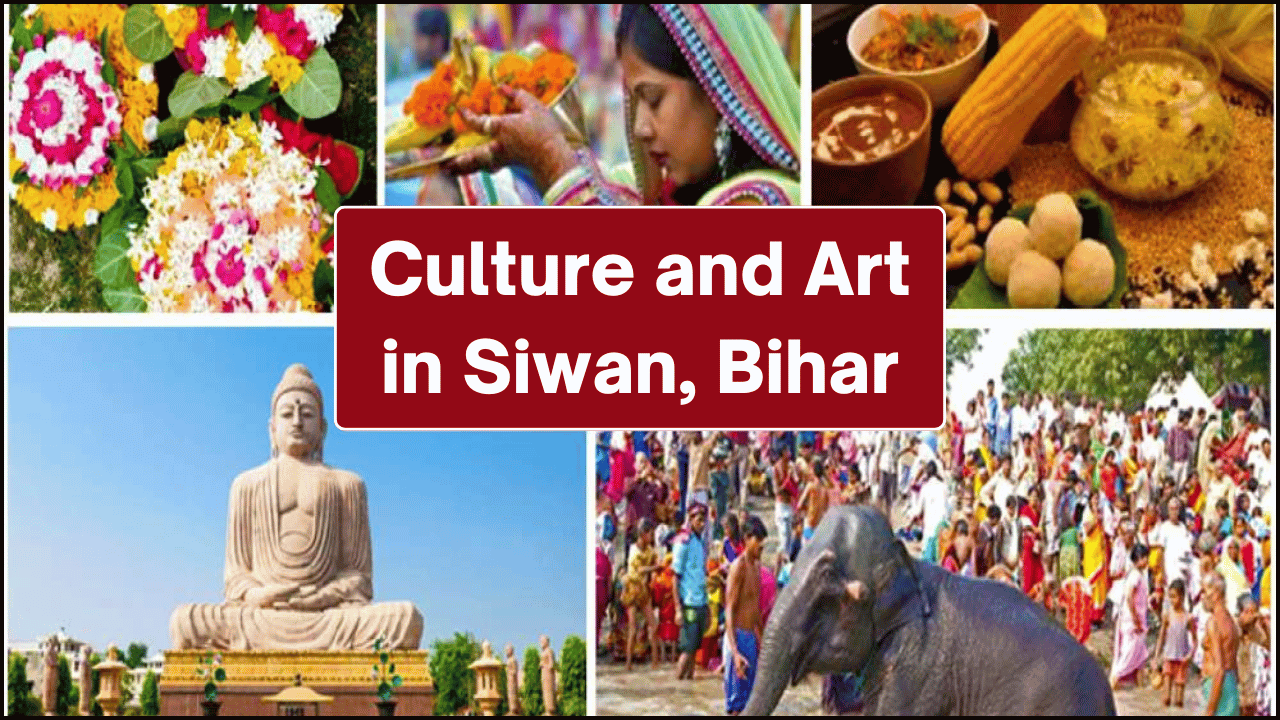
Siwan, a historically and culturally rich district in Bihar, is an realization of India’s diverse traditions and artistic heritage. Situated in the western part of the state, Siwan has witnessed the rise and fall of numerous dynasties, each leaving a lasting imprint on its cultural landscape. While it may not be as widely recognized as other cultural hubs of Bihar, Siwan boasts a fascinating mix of folk traditions, religious practices, and artistic expressions that define its identity.
From its vibrant festivals and folk music to exquisite handicrafts and religious art, Siwan remains a hidden gem that reflects the essence of rural Bihar. The artistic legacy of this region has been preserved through generations, carried forward by the skilled artisans and folk performers who keep traditional practices alive. This article explores the rich cultural and artistic heritage of Siwan, shedding light on its contributions to Bihar’s artistic landscape.
Folk Traditions and Festivals in Siwan
1. The Vibrant Festival Culture
Festivals in Siwan are an integral part of life, bringing communities together in celebration of religious and cultural heritage. Some of the most significant festivals in Siwan include:
- Chhath Puja: The most important festival of Bihar, Chhath Puja is observed with great devotion in Siwan. This ancient festival is dedicated to the Sun God, and the rituals include fasting, prayers, and offerings made at rivers and ponds. The traditional folk songs sung during this festival are an essential part of the region’s cultural fabric.
- Holi: The festival of colors is celebrated in Siwan with huge enthusiasm. Folk songs, especially Bhojpuri Fagua music, fill the air, and traditional dance performances take center stage.
- Durga Puja and Navratri: Grand pandals (temporary shrines) are set up across the district, adorned with intricately designed idols of Goddess Durga. The artistic decorations reflect the creativity of local craftsmen and artisans.
- Muharram and Eid: The Muslim community in Siwan actively participates in Muharram processions, which showcase religious art and devotion. Eid is celebrated with feasts, prayers, and cultural events that highlight the district’s diversity.
- Makar Sankranti and Teej: These festivals are celebrated with traditional music, dance, and special delicacies like tilkut and litti-chokha, adding to the cultural charm of Siwan.
Each festival in Siwan is a spectacle of traditional attire, folk songs, and ritualistic dances, creating an atmosphere of joy and unity.
Music and Dance: The Soul of Siwan
1. Bhojpuri Folk Music
Music is an essential part of Siwan’s cultural heritage. Being a stronghold of Bhojpuri culture, the region has preserved its folk music traditions, which are performed during social gatherings, festivals, and religious events. Some popular forms of music include:
- Chhath Geet: Devotional songs sung in reverence to the Sun God during Chhath Puja.
- Sohar: Songs performed to celebrate childbirth and bless newborns.
- Bidesia and Nirgun Geet: These folk ballads narrate stories of migration, love, and spiritual themes.
- Biraha Geet: Songs of separation and longing, often sung in memory of loved ones who have migrated for work.
2. Traditional Dance Forms
Siwan’s folk dance forms are deeply rooted in its agrarian traditions and social customs. Some notable dance forms include:
- Jhumar: A graceful dance performed during harvest festivals and weddings.
- Jat Jatin: A dramatic dance that tells rural love stories through expressive movements.
- Launda Naach: A unique form of folk theater where male dancers dress as women and perform at social events and weddings.
These dance traditions are passed down through generations and continue to thrive in local communities.
Handicrafts and Artistic Traditions of Siwan
1. Madhubani and Folk Painting
While Madhubani painting is primarily associated with the Mithila region of Bihar, Siwan has also embraced this folk art form. Many artists in the district have adapted the intricate painting style, using natural colors and depicting mythological themes on walls, paper, and fabric. These paintings are often seen adorning homes and temples in rural areas.
2. Pottery and Terracotta Art
The tradition of pottery in Siwan dates back centuries. Skilled artisans craft clay pots, diyas, idols of Hindu deities, and decorative terracotta items. These handcrafted items are especially in demand during Diwali and Chhath Puja, showcasing the creativity of local potters.
3. Bamboo and Cane Craft
Bamboo and cane craftsmanship is another important artistic tradition in Siwan. Skilled artisans create baskets, mats, handwoven furniture, and decorative items that are used in daily life as well as for festive occasions. These eco-friendly products are a testament to the district’s sustainable artistic heritage.
4. Textile and Embroidery Work
The women of Siwan play a crucial role in preserving traditional embroidery and weaving techniques. Hand-embroidered fabrics, beautifully designed sarees, and woven textiles are often made for festivals, weddings, and special occasions. The intricate patterns and vibrant colors reflect the artistic sensibilities of local craftswomen.
